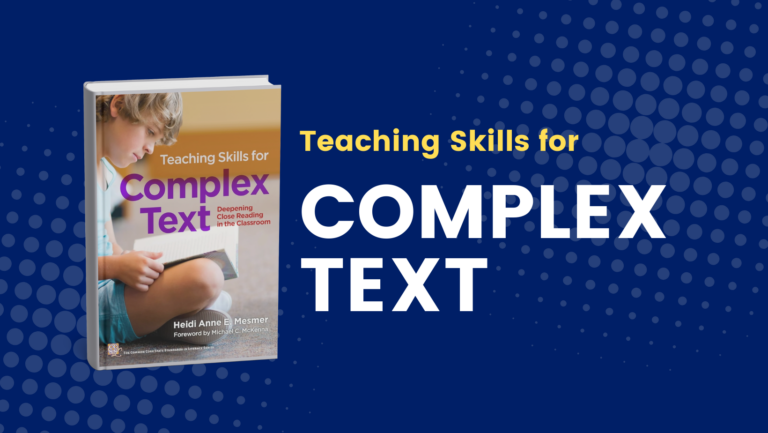This winter and spring, ONlit hosted a dynamic six-part book study designed specifically for Ontario educators teaching Grades 3–8. Centred on Dr. Heidi Anne Mesmer’s Teaching Skills for Complex Text, the series was facilitated by Nellie Caruso and Leigh Fettes. It offered educators a practical, curriculum-aligned opportunity to dive into some of the most important—but often overlooked—skills that help students become stronger readers.
The revised Ontario Language curriculum strongly emphasizes supporting students to read and comprehend increasingly complex texts (Strand C). But what exactly is a complex text? These texts go beyond surface-level comprehension. They often contain abstract ideas, layered meanings, dense vocabulary, unfamiliar syntax, and sophisticated text structures. To read these texts well, students need more than general strategies—they need targeted instruction in the specific skills that make comprehension possible.
Each session in the series tackled one of those specific skills, helping educators move from theory to classroom practice. The first session, “Untangling Anaphora,” introduced the idea of cohesion in text—how authors refer back to previous ideas using pronouns and synonyms. Understanding these connections is essential for students to track meaning across sentences and paragraphs.
In the second session, educators explored how authors use connectives—words like however, because, and although—to signal relationships between ideas. These little words carry big meaning, and students often need direct instruction to understand how they shape the logic of a sentence or argument.
The third session shifted to paragraph structure. Participants learned how to guide students in identifying the topic and focus of a paragraph, an important step in teaching summarising and main idea skills. By drawing attention to how paragraphs work, educators can help students navigate longer texts with more independence.
Session four focused on gathering evidence, a critical skill in both literary analysis and informational reading. Educators explored ways to help students locate and use text evidence to support their interpretations—an expectation in many parts of the curriculum and a foundational skill for future academic success.
In the final session, “Stretching Students in Texts,” the group turned to helping students manage cognitive load and persist with challenging material. Strategies for increasing reading stamina and supporting productive struggle were discussed, alongside ideas for choosing the right texts and scaffolding instruction.
This series wasn’t just about building knowledge—it was about building practice. Each hour-long session provided immediately usable routines, classroom examples, and a chance to connect with fellow Ontario educators. Whether participants were new to the revised curriculum or looking to sharpen their practice, the book study offered something for everyone.
Recordings of all six sessions are available – if you missed it live, dive into the recordings to catch up!





